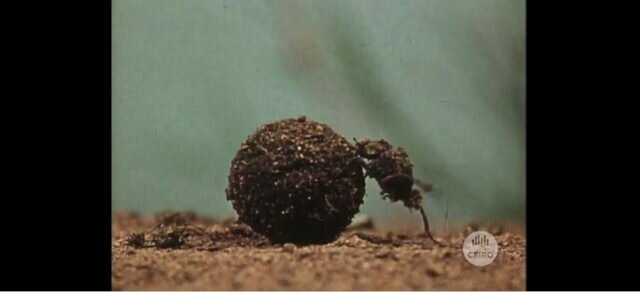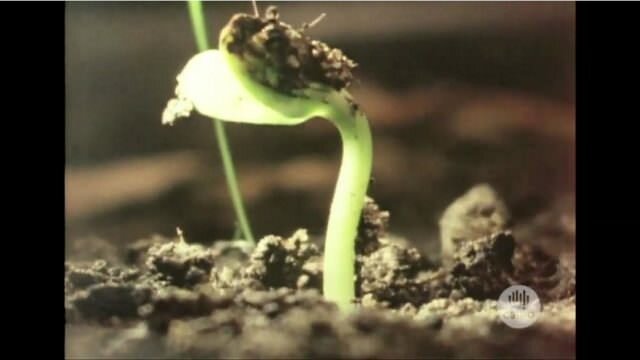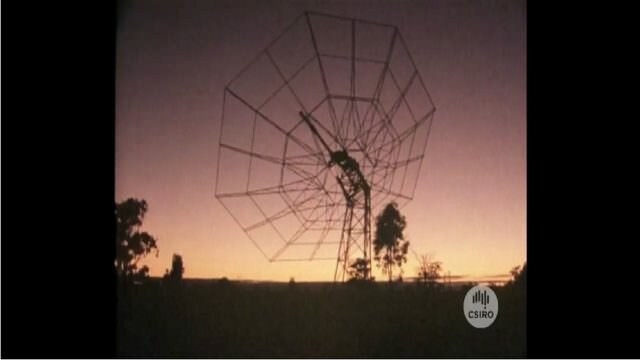Lisa Bailey
Vintage CSIRO
Last updated March 7, 2017 at 12:26 pm
Classic science films from the CSIRO vault
Dung Down Under (1972)
Domestic cattle drop 33 million tonnes of dung on Australian pastures every year. Pasture areas are reduced and fly pests, like the bushfly and the buffalo fly, thrive.
Entomologists are seeking a solution to these problems through the dung beetle, which breaks up and disperses dung pads.
Selected species of dung beetles imported from Africa are being mass bred in Australia for release in cattle breeding areas. Early results indicate that they will prove an outstanding example of biological control.
The birth of the Red Kangaroo (1965)
This remarkable film record of marsupial birth shows mating, the female’s preparation for the birth of her young and, finally, the birth itself.
One birth sequence shows the natural behaviour of the mother as the young makes its way, unaided, to the pouch. A second sequence, with the anaesthetised female, shows the moment of birth more clearly and follows the embryo”s long journey up over the fur to the pouch, where it develops as an externalised foetus.
The significance of the oestrous cycle and gestation period, egg fertilisation, and the development of the embryo in the uterus, is shown in animated diagrams.
The living soil (1982)
Without spoken commentary, this film depicts both the life of the soil and the life within it. The parent rock weathers, and soil is born. It cracks under the Sun, then rain brings it back to life: seeds germinate, and animals burrow and bustle below and above the soil”s surface. To complete the chemical cycle, fungi, agents of decay, flourish, themselves to decay in turn. Scavenging insects pick a mouse corpse clean, and a new generation of shoots sprouts among the bones.
Photographic techniques reveal actions that our senses cannot otherwise register. Slow-motion anatomizes the impact of a water drop on sand; time-lapse photography eliminates transient details and emphasizes processes, such as the growth of roots and shoots and the removal of soft tissue from a dead animal. These processes, being slow, fail to catch our attention on a brief nature ramble, but they power the mechanism of the living soil. As the film”s introduction states: ”the soil is both the source and the product of the cycle of life and decay”.
For many people, soil is just `dirt”. Yet through a fresh eye – that of the camera – they will see soil as the home of a vital community.
This film screened in Australia as a Theatrical short with the original release of Star Wars – The Empire Strikes Back.
The Sun, our nearest star (1981)
The Sun is typical of millions of stars in our galaxy, but it is the only one close enough to been seen in any detail.
At Culgoora, 650 kilometres north-west of Sydney, CSIRO scientists are studying the Sun and its atmosphere, using both radio and optical instruments.
The main optical instrument is a 30 centimetre high-resolution telescope which is used to study the physical processes in the Sun’s atmosphere.
Also at Culgoora is the radio-heliograph, a unique instrument consisting of a ring of 96 aerials, each 13.5 metres across, spaced around a circle 3 kilometres in diameter. It produces images of the Sun at four different frequencies and provides much information about activity in the corona – the Sun’s vast outer atmosphere.
The Sun affects our earthly environment in many ways. It is a giant thermo-nuclear furnace, a unique laboratory in space, in which physicists can study the interaction of hot ionized gases and strong magnetic fields.
About the Author
Published By
Science and technology is as much a part of our cultural fabric as art, music, theatre and literature. They play a significant role in our daily lives, yet, in a world dependent on science, we often take them for granted. Australia’s Science Channel believes every citizen has a right, and a responsibility, to be informed, and our mission is to create programs to bring that about.









